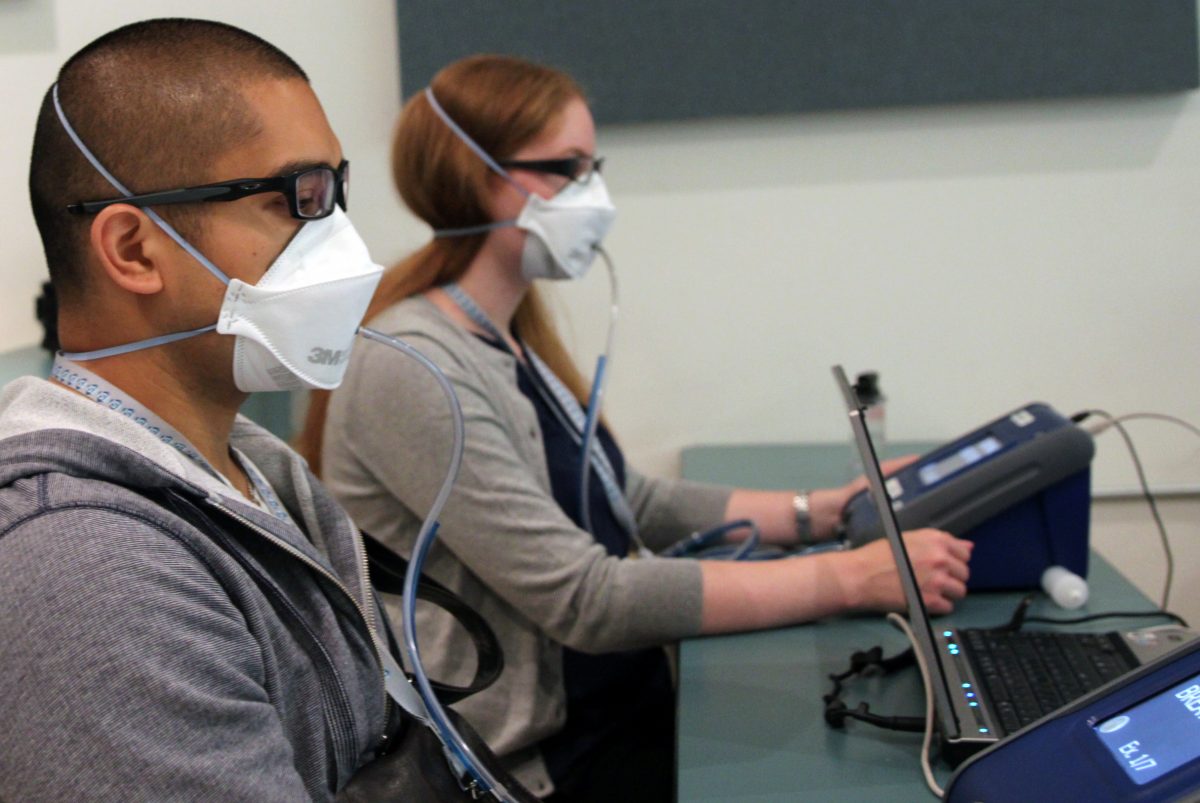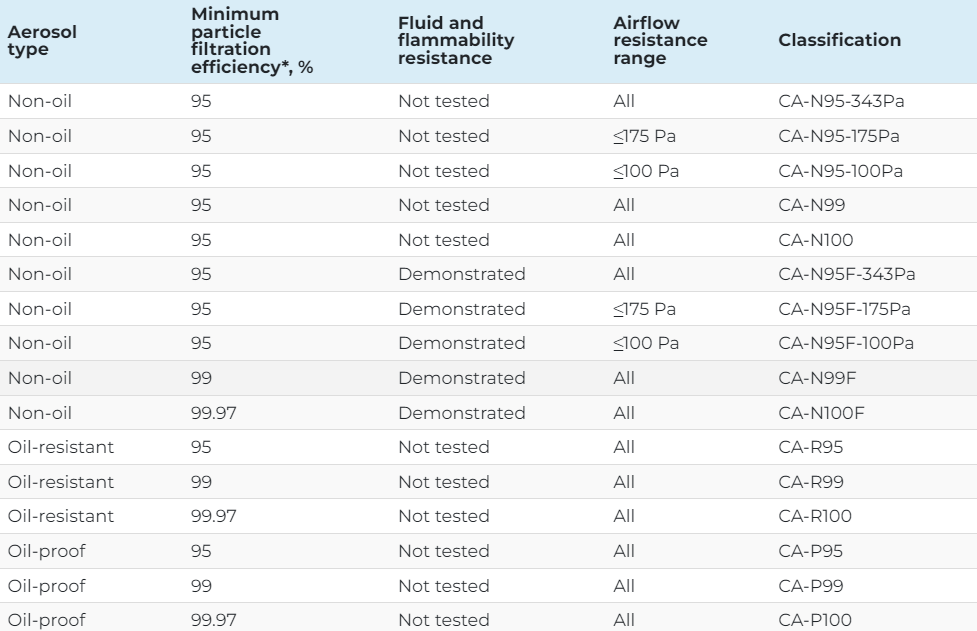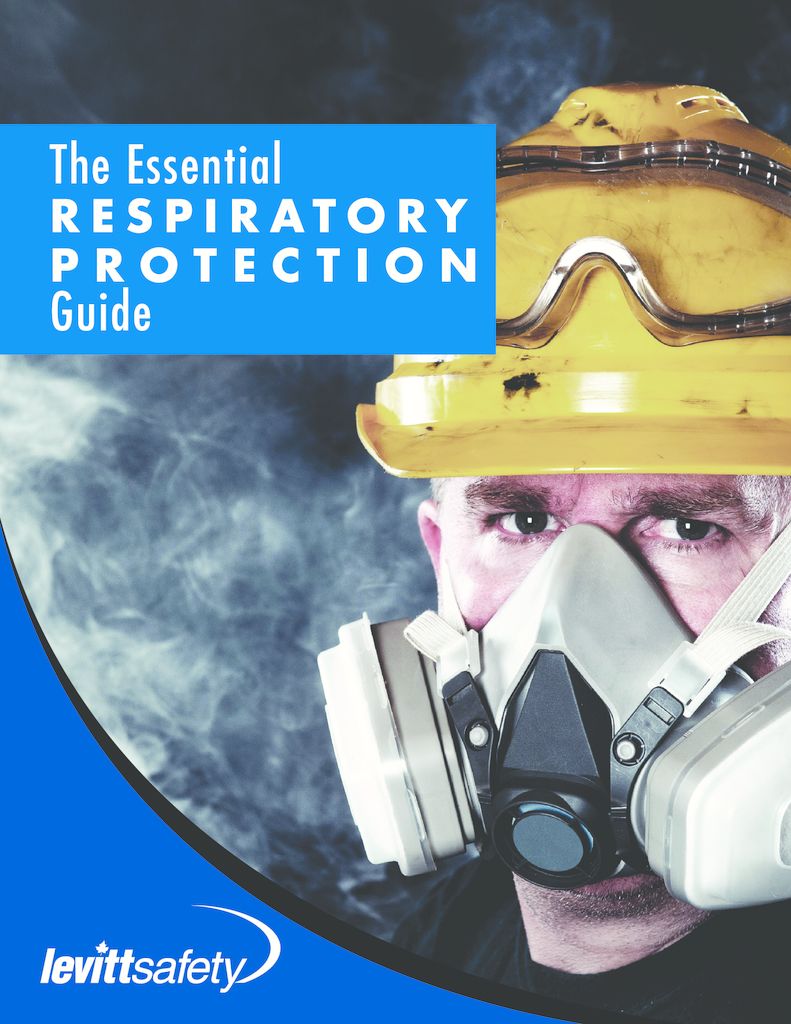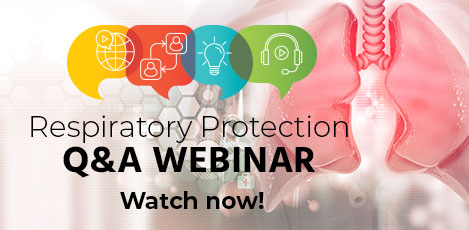What’s a CA-N95? Understanding the new CSA Z94.4.1:21 standard for respirators in Canada

You’ve probably seen respirators in stores recently marked as “CA-N95”. It's not some marketing ploy. CA-N95 is part of the new CSA Z94.4.1:21 standard for filtering respirators.
This standard comes from the CSA Group, the same body that releases standards you already follow in your workplace for safety glasses, head protection and other PPE.
Here’s the TL;DR (too long; didn’t read) version: A respirator with the CSA CA-N95 mark on it is every bit as good as an N95 respirator, and in some respects, the CSA standard is more rigorous.
What is CSA Z94.4.1:21?
CSA Z94.4.1:21 provides a classification for respirator types and performance criteria for respirator certification. It follows the requirements in 42 CFR 84 approved by the National Institute for Occupational Safety and Health (NIOSH) in the United States.
The Canadian standard and accredited certification program provides manufacturers with an equivalent option to the U.S. NIOSH certification program for filtering respirators.
Eventually, this certification program will replace the Health Canada Guidance on safety and performance specifications for filtering facepiece respirators (FFRs) issued during COVID-19 in 2020.
Comparing CSA Z94.4.1:21 with NIOSH (42 CFR 84):
A primary objective of CSA Z94.4.1:21 was to align the Canadian standard to NIOSH requirements. CSA also took the opportunity to address some of the specific needs and requirements identified during COVID-19.
Some of the key additions include:
- Fit testing: The quantitative fit test is the sole testing method to certify a respirator.
- Airflow resistance and breathability: New classes with lower airflow resistance were introduced to address breathability and comfort.
- Fluid and flammability resistance: New class for fluid and flammability resistance to address medical and surgical applications.
- Shelf life: Requirement included for manufacturers to provide validation of a given lifetime.
CSA Z94.4.1:21 excluded gas/vapour and CBRN filtering respirators, such as:
- self-contained breathing apparatus (SCBA)
- gas masks
- chemical cartridge respirators
- special use respirators, and
- closed-circuit escape respirators.
NIOSH 42 CFR 84 Standard Requirements
- Filter performance (must be ≥ X% efficient): ≥95%
- Testing agent: NaCL
- Flow rate: 85 L/min
- Inhalation resistance - max pressure drop: ≤ 343 Pa
- Exhalation resistance - max pressure drop: ≤ 245 Pa
- Inhalation/exhalation resistance: No requirement to mark or inform the user of the degree of inhalation/exhalation, which is a factor for breathability.
- Fit: No definition for single-use respirators, isoamyl acetate qualitative test for others.
- Fluid resistance: FDA Clearance for surgical use (including fluid/flammability testing) is additional to 42 CFR 84.
- Shelf life: No requirement
- Marking/labelling: N95/99/100
CSA Z94.4.1:2021 Standard Requirements
- Filter performance (must be ≥ X% efficient): ≥95%
- Testing agent: NaCL
- Flow rate: 85 L/min
- Inhalation resistance - max pressure drop: Three levels: ≤ 100 Pa, ≤ 175 Pa, ≤ 343Pa
- Exhalation resistance - max pressure drop: Three levels: ≤ 100 Pa, ≤ 175 Pa, ≤ 245 Pa
- Inhalation/exhalation resistance: Requirement to add a suffix to the particulate filtration designation to inform users if the inhalation/exhalation testing falls within 3 levels of breathability (from more difficult/higher resistance results to easier breathability/lower resistance results)
- Fit: Quantitative fit test method for all respirator types other than loose-fitting PAPRs.
- Fluid resistance: Fluid/flammable resistance is included as a respirator class.
- Shelf life: Designation and validation of shelf life for filters and integrated respirators, optional for other components.
- Marking/labelling: CA-N95/N99/N100. L replaced by F for surgical respirators and only 1 level so no number added.
How are respirators tested to ensure quality?
Respirators must undergo a variety of tests such as filter performance, airflow resistance, strap strength, fit and comfort. Unique to the CSA respirators, they must meet quantitative fit test requirements. There are seven tests a wearer must perform while wearing the respirator. Multiple people with varying facial features and head sizes test the respirators.

CSA also outlines that the test panel at least one person wearing eyeglasses and a minimum of 30% of one sex.
For a respirator to pass, at least 70% of the test subjects must obtain an acceptable fit for the respirator type.
Fluid and flammability resistance:
Respirators that demonstrate resistance to fluids and flame will include an -F suffix after the CA-N-type name. For example, CA-N95-F or CA-R99-F.
The fluid resistance tests involve spray a fluid simulating blood at the respirator from a distance of 35cm and visually assessing penetration through the filter media.
All materials used in a -F suffix respirator must meet Class 1 flammability requirements for non-raised fabrics in ASTM F2100.
During testing, the specimen is tested in the fabric’s fastest burning direction. The burn time must be greater than or equal to 3.5 seconds.
A respirator must meet the testing requirements outlined in the following standards:
- fluid resistance requirements of ASTM F1862M, and
- flammability requirements of 16 CFR 1610.
Airflow resistance and breathability:
You may notice a suffix, such as -100Pa, -175Pa or -343Pa, after the CA-N95 or CA-N95F.
100Pa or 175Pa suffixes indicate the respirator’s inhalation and exhalation resistance are both ≤100 Pa or ≤175 Pa. The 343Pa suffix indicates an inhalation airflow resistance of ≤343 Pa and exhalation resistance of ≤245 Pa.
The smaller the number, the less breathing resistance a wearer will experience.
Classification for non-powered filtering respirators:
The naming convention for non-powered particle filtering respirator is as follows:
- CA-N-type respirators (for instance, CA-N95 or CA-N99): For removal of any particles excluding oil-based liquid particles.
- CA-R-type respirators (for instance, CA-R95 or CA-R99): For removal of any particles including oil-based liquid particles for one 8-hour period.
- CA-P-type respirators (for instance, CA-P95 or CA-P99): For removal of any particles including oil-based liquid particles for a duration not restricted by loss of filter efficiency.

Classification for powered air-purifying respirators:
Powered air-purifying respirators (PAPR) use a blower to move ambient air through one or more filters to remove contaminants and deliver clean air to the respiratory interface.
There are two types of PAPRs according to the seal to the face:
- Tight-fitting PAPRs: Designed to create an effective seal to the face.
- Loose-fitting PAPRs: Designed to have a respirator interface that does not seal tightly to the face.
PAPRs can receive one of three classifications under CSA Z94.4.1:21.
- HE filters: Intended for use in atmospheres in anticipation of moderate to high particle filter loading.
- CA-PAPR100-N filters: Intended for use for removing particles excluding oil-based liquid particles.
- CA-PAPR100-P filters: Intended for use for removing particles including oil-based liquid particles for a duration not restricted by loss of filter efficiency.

Marking:
There are specific marking requirements for different respirator types.
Disposable respirators and respirators with replaceable filters:
Disposable respirators and respirators with replaceable filters must be marked at minimum with:
- manufacturer name, logo or identifying mark
- means of traceability as chosen by the manufacturer (e.g., a lot number)
- reference to CSA Z94.4.1:21
- part number or type identifying mark
- the filter classification (e.g., "CA-N95" or "CA-PAPR100-N"), and
- indication if for single-use only.
Non-integrated respirators:
Respirators where the filter does not form the body of the respiratory interface or a respirator that does not have a filter permanently incorporated into the breathing air path must be marked at minimum with:
- manufacturer name, logo or identifying mark
- part number or type identifying mark, and
- size, if applicable.
The primary packaging must be marked with identifying information including the manufacturer name, product shelf life, manufacture date and contact information.
Information the manufacturer must supply:
Manufacturers must also supply information in a readable format that accompanies the respirator under this standard. The information must be in both official languages of Canada. Along with the required markings on the respirator and primary packaging, the manufacturer must also provide information on:
- configuration
- storage, selection, donning, fit testing and pre-use checks
- operational
- maintenance, and
- cleaning.
Buy your respiratory protection with confidence:
CA-N-type respirators are going to be more common in the Canadian space. That means there will be some unscrupulous people trying to make a quick buck.
Use these best practices to make sure you’re buying CSA-approved respirators.
- Writing and branding in English and French.
- Includes serial or lot numbers.
- Has the official CSA logo.
- Features necessary markings listed above.
- References the CSA Z94.4.1:21 standard.
- Source your products from a reputable manufacturer/distributor.
Next steps:
This post only scratches the surface of respirators. Download the Essential Guide to Respiratory Protection to learn even more.

